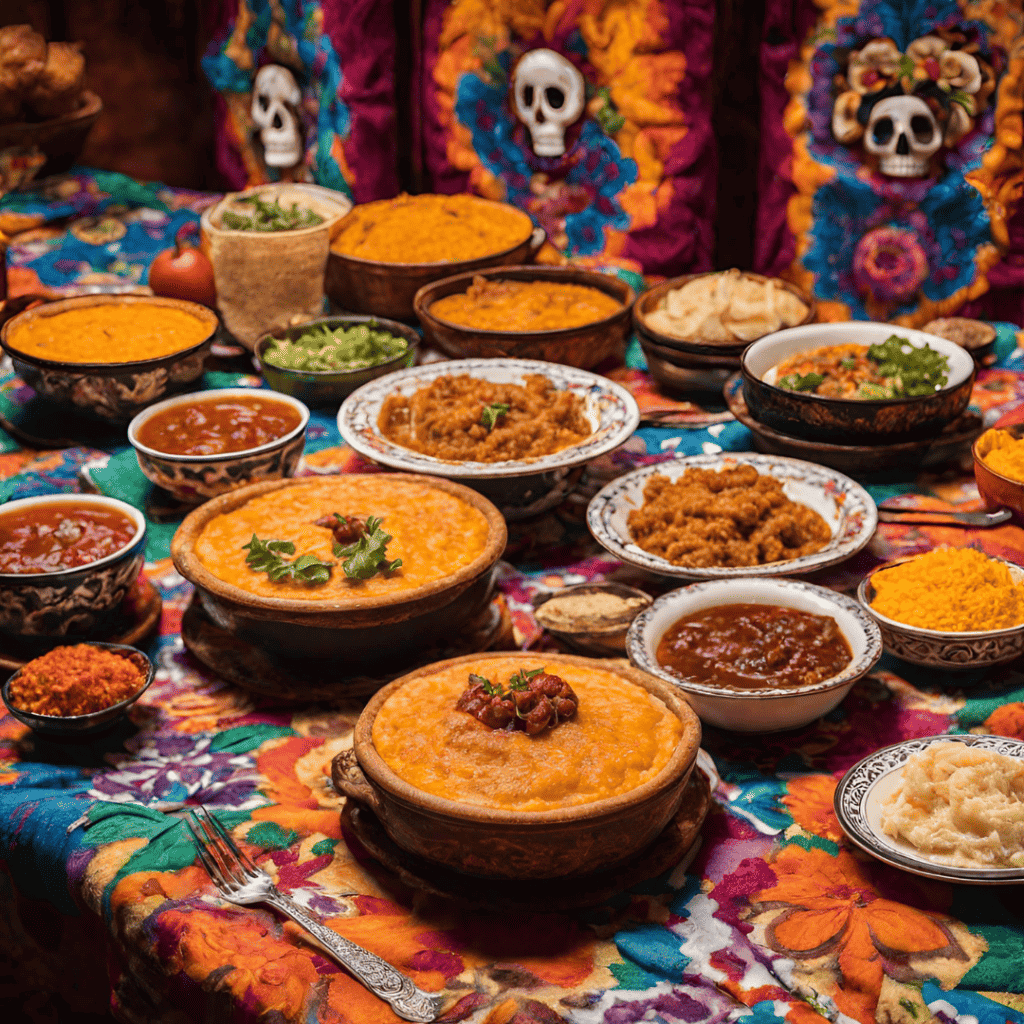Dia de los Muertos, or the Day of the Dead, is a vibrant and deeply meaningful celebration in Mexico that commemorates and honors deceased loved ones. This tradition is a unique fusion of indigenous and Spanish influences, resulting in a colorful and lively cultural event that takes place over several days. In this blog post, we’ll explore the rich traditions of Dia de los Muertos in Mexico, from its historical roots to contemporary practices that have made it an internationally recognized and celebrated holiday.

The History and Origins of Dia de los Muertos
Has deep indigenous roots dating back to Mesoamerican civilizations such as the Aztecs, Maya, and Nahua. These pre-Columbian cultures believed in the cyclical nature of life and death, viewing death not as an end but as a natural part of the human experience. The rituals surrounding death were closely tied to agricultural cycles and the seasons, emphasizing the importance of rebirth and renewal.
With the arrival of the Spanish conquistadors in the 16th century, Catholicism became the dominant religion in the region. Over time, indigenous beliefs and Catholicism intertwined to create Dia de los Muertos as we know it today. The holiday’s date was moved to coincide with All Saints’ Day and All Souls’ Day, celebrated on November 1st and 2nd, to align it with the Catholic calendar. This fusion of indigenous and Catholic customs gave rise to the unique and colorful traditions of Dia de los Muertos.
Altars and Ofrendas: Creating a Connection with the Departed
One of the central elements of Dia de los Muertos is the creation of altars, known as ofrendas. These are meticulously decorated with various items and offerings that hold special significance. Families and communities construct ofrendas in their homes, cemeteries, and public spaces to honor their deceased loved ones. These altars typically include:
- Photographs: Portraits of the departed are displayed prominently, ensuring that their memory remains vivid and personal.
- Candles: Lit to guide the spirits back to the world of the living, candles represent hope, faith, and remembrance.
- Marigolds: Known as cempasúchil, these vibrant orange flowers are believed to attract the spirits with their strong scent and vibrant color.
- Calaveras: Sugar skulls and skeleton figurines are used to symbolize the cycle of life and death. These are often inscribed with the names of the deceased.
- Favorite Foods and Drinks: Traditional dishes, such as tamales, pan de muerto (bread of the dead), and mole, are prepared and placed on the ofrenda as an offering to nourish the spirits.
- Personal Belongings: Items that the deceased loved during their lifetime, such as musical instruments, books, or tools, are included to provide comfort and familiarity.
- Copal Incense: The aroma of copal incense is believed to purify the space and facilitate communication between the living and the dead.
The Visits to Cemeteries: A Day of Remembrance
On November 1st and 2nd, families visit cemeteries to be with their deceased loved ones. Grave sites are cleaned, decorated, and adorned with ofrendas. This is a time for reminiscing, sharing stories, and feeling a strong sense of connection with those who have passed. Families often spend the entire day at the cemetery, enjoying a picnic and celebrating the lives of the departed. The atmosphere is one of both reverence and celebration, creating a unique blend of emotions that characterizes Dia de los Muertos.
Calacas and Catrinas: Iconic Symbols of Dia de los Muertos
Calacas and Catrinas are two iconic figures that have become synonymous with Dia de los Muertos. Calacas are whimsical, brightly colored skeletal figurines that represent the playful nature of death. They often engage in activities that the deceased enjoyed during their lifetime, such as dancing, playing music, or riding bicycles. Catrinas, on the other hand, are elegant and beautifully dressed female skeletons. These figures were originally created as a satirical commentary on the upper class’s vanity and obsession with European fashion during the 19th century. Today, they have become a symbol of both Dia de los Muertos and Mexican culture as a whole.
Modern Interpretations and International Recognition
In recent years has gained global recognition and popularity. Mexican communities around the world celebrate the holiday, and non-Mexicans have embraced its customs and aesthetic. The vibrant face-painting and colorful sugar skull makeup have become a popular Halloween trend, and Dia de los Muertos celebrations are often included in cultural festivals worldwide.
While some purists worry about the potential commercialization and cultural appropriation of the holiday, many see the international interest as an opportunity to share the rich traditions and deeper meanings of Dia de los Muertos with a global audience. It’s essential to approach this celebration with respect, understanding, and an appreciation for its significance beyond the visual appeal.
Is a remarkable celebration that beautifully blends indigenous and Catholic traditions, creating a unique and deeply meaningful holiday in Mexico. Its colorful ofrendas, vibrant marigolds, playful calacas, and elegant Catrinas all serve to commemorate the lives of the departed. This annual ritual not only honors the deceased but also serves as a powerful reminder of the interconnectedness of life and death. As the world continues to embrace and celebrate Dia de los Muertos, it is crucial to appreciate its cultural significance and historical roots. This extraordinary holiday not only serves as a testament to Mexican culture but also as a universal reminder of the importance of remembering and celebrating our loved ones, both in life and in death.
